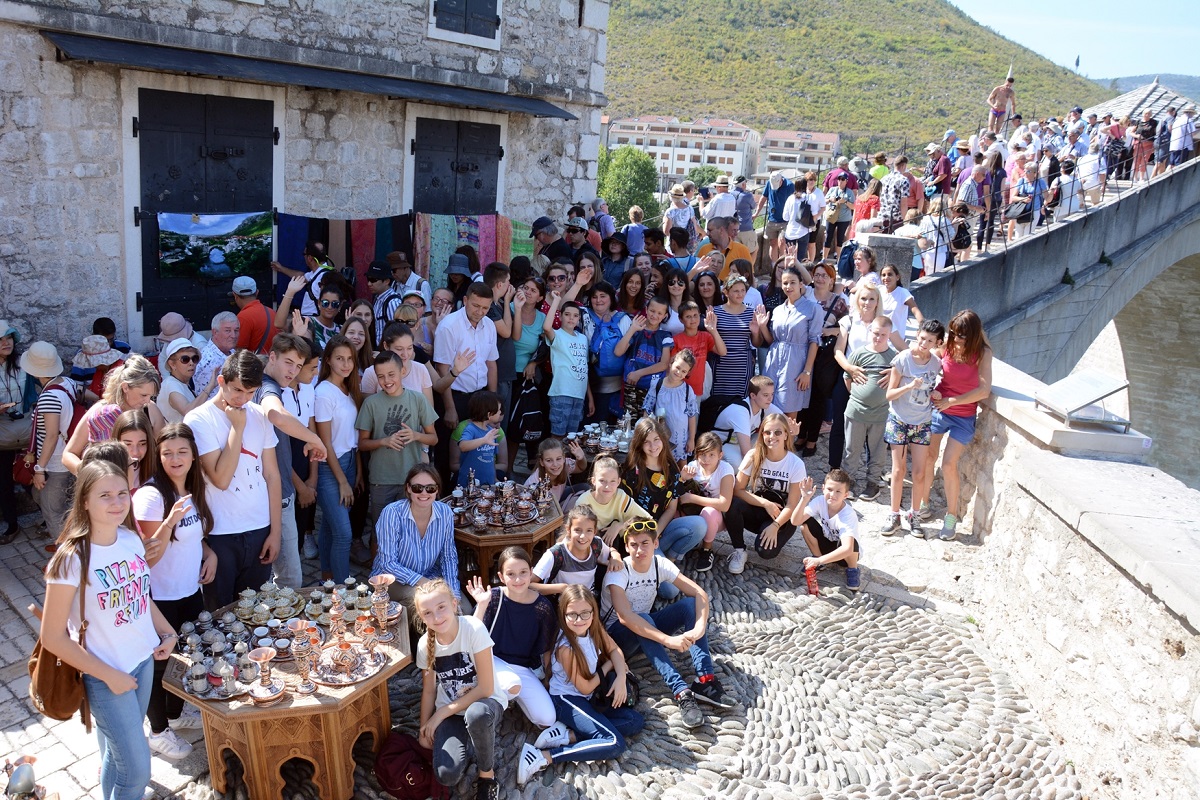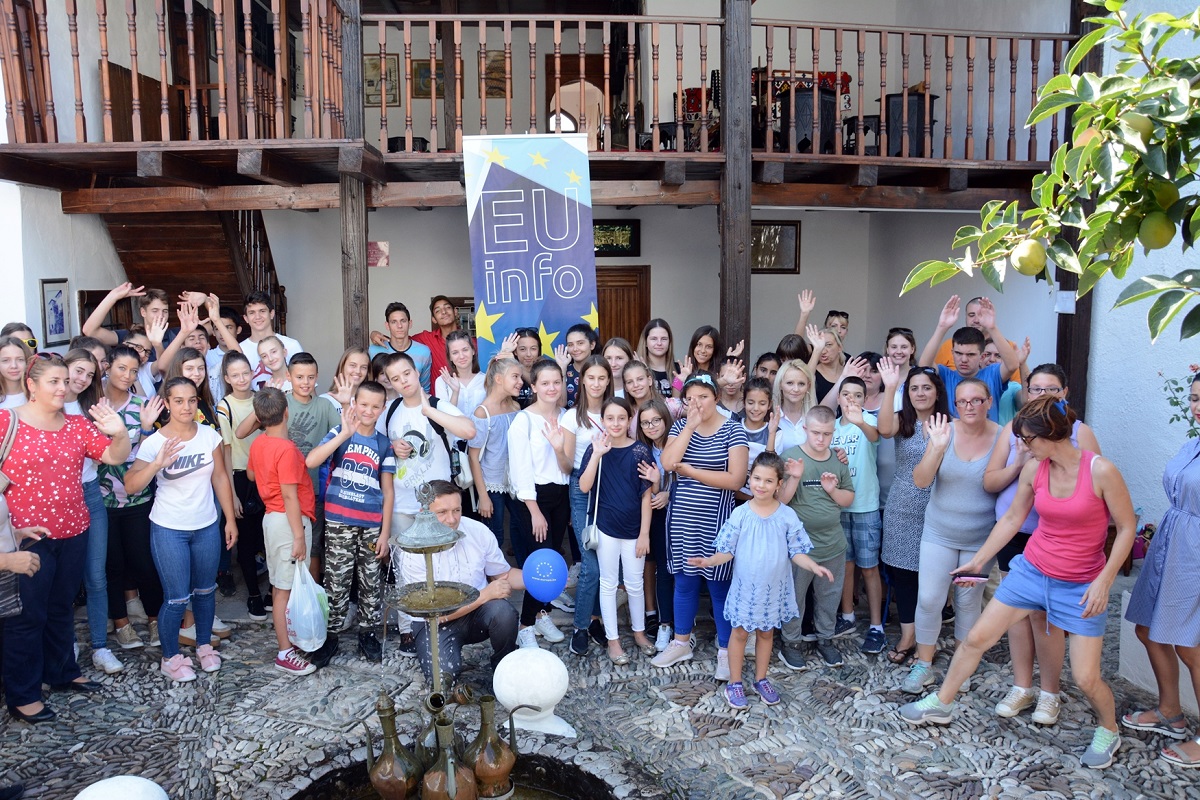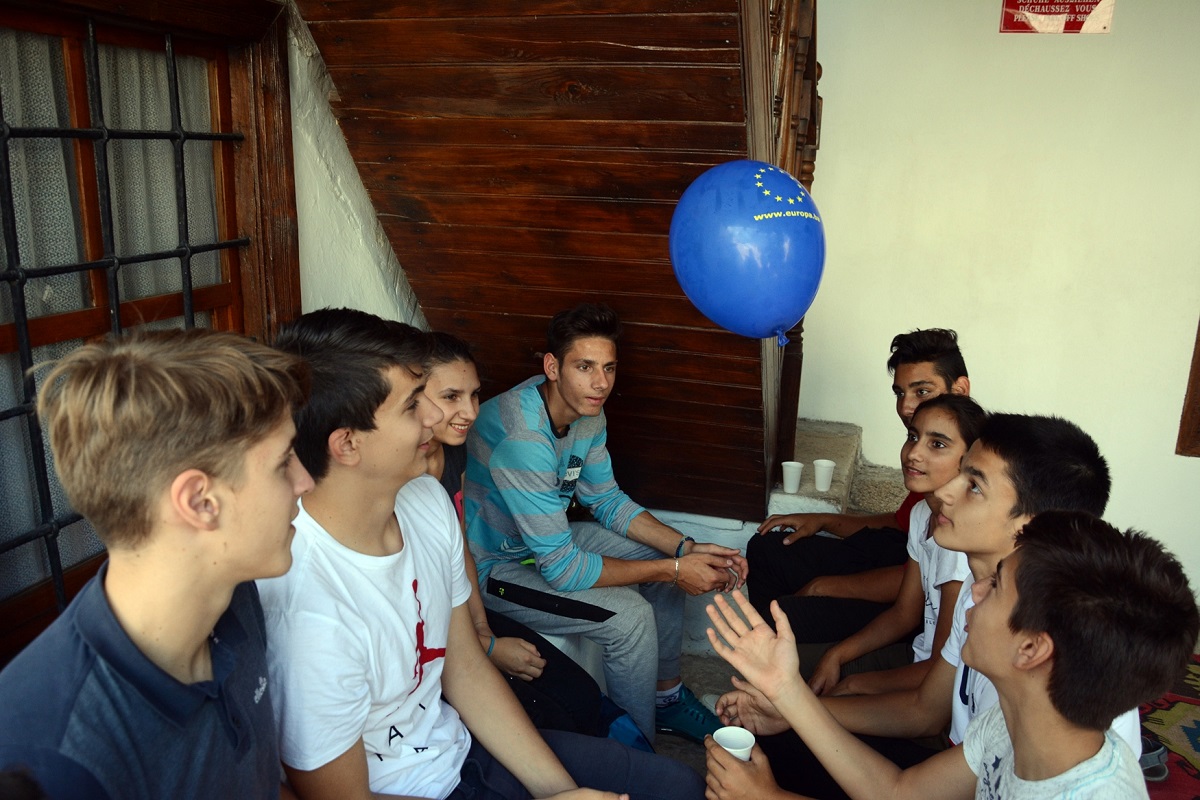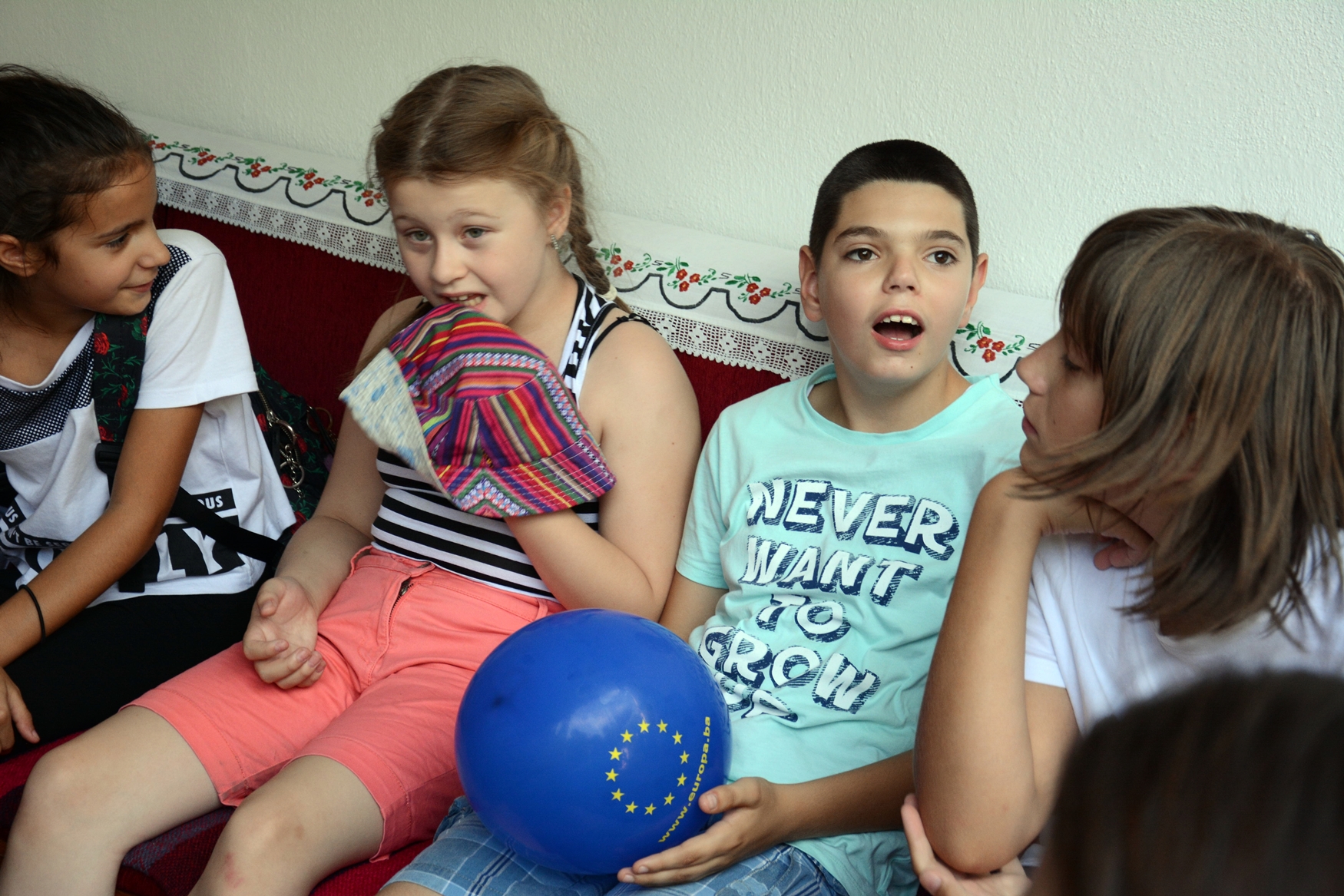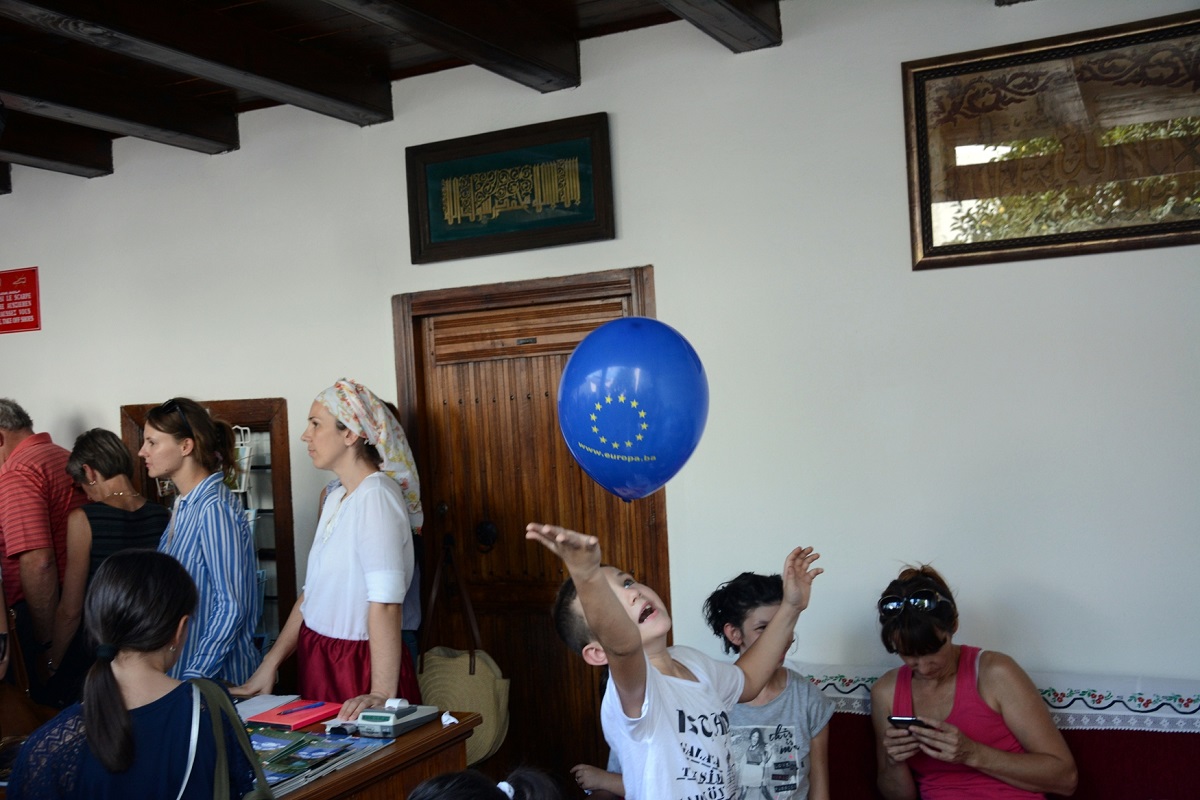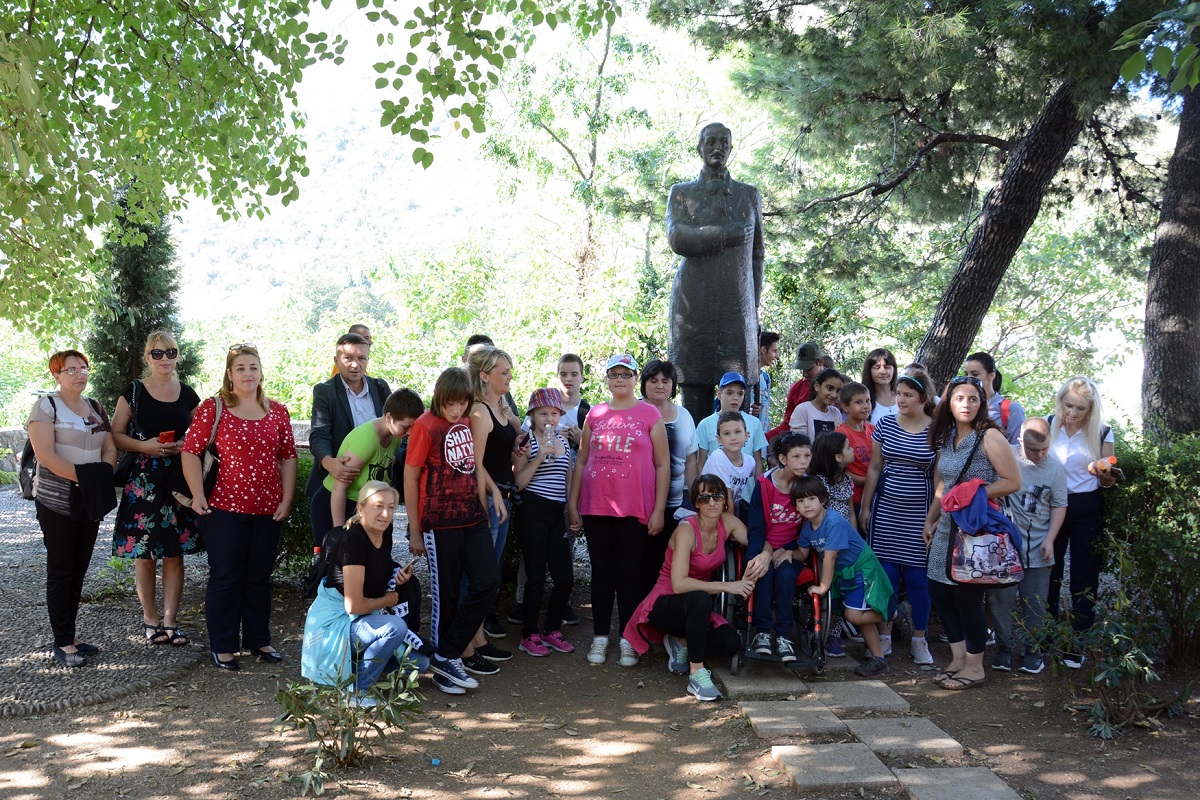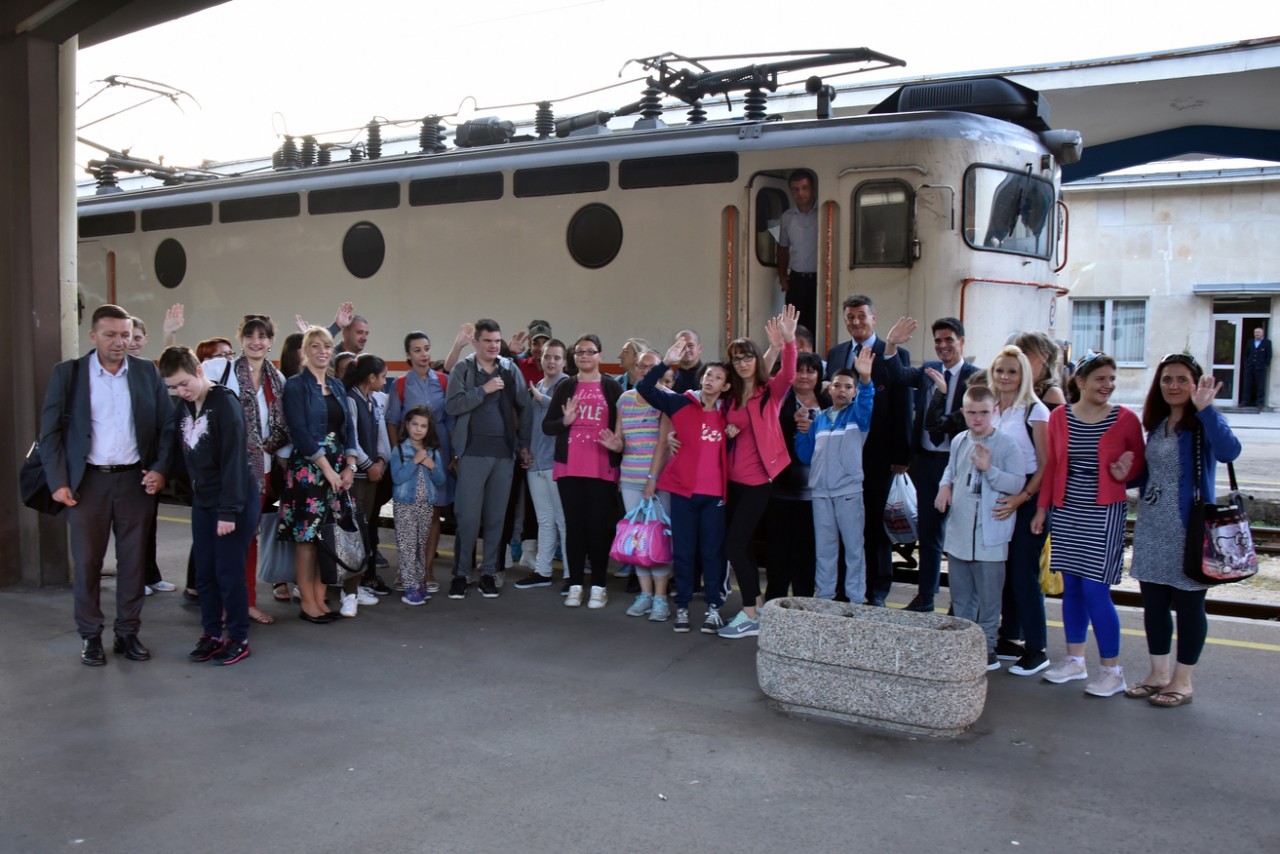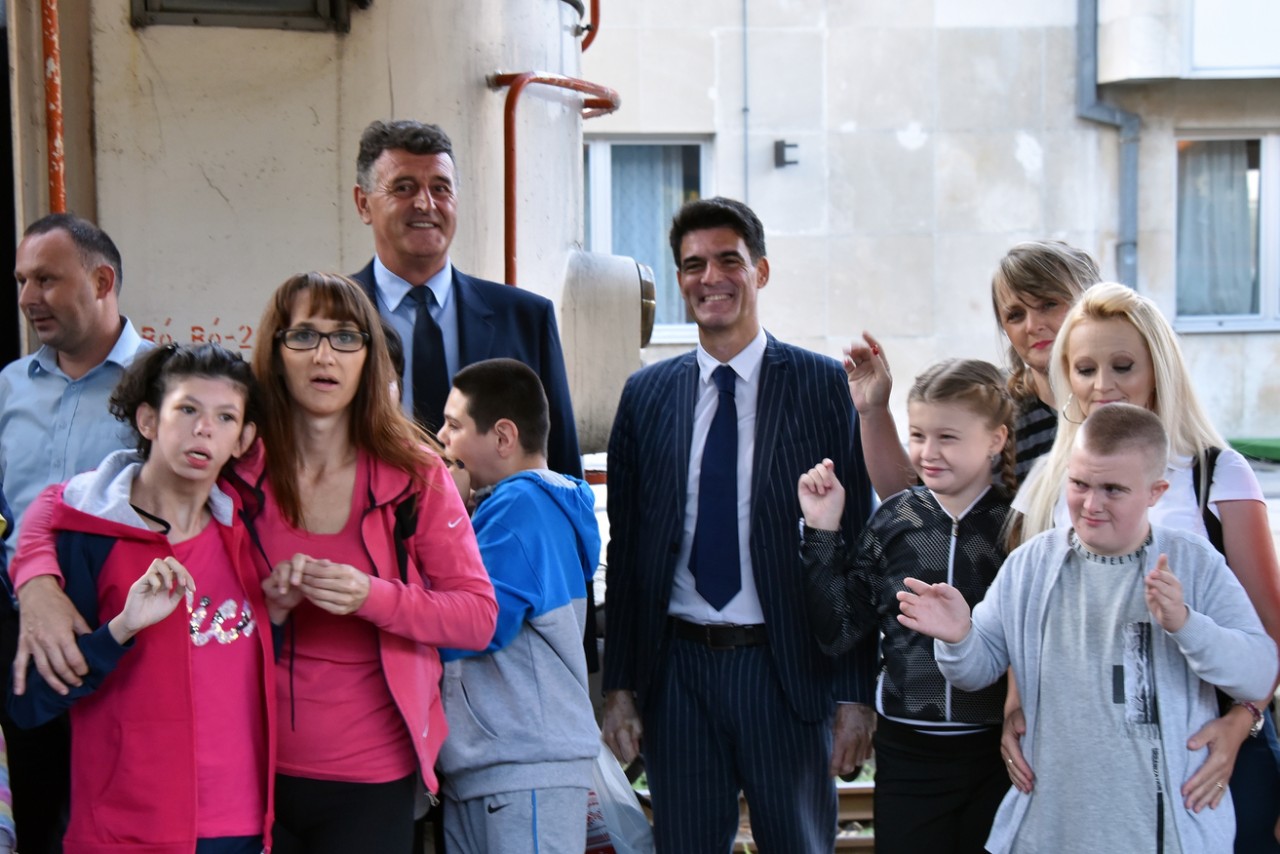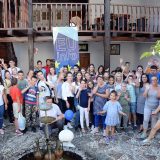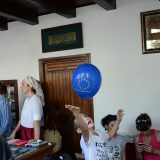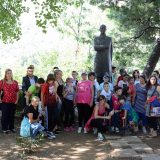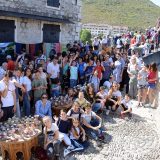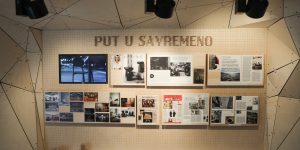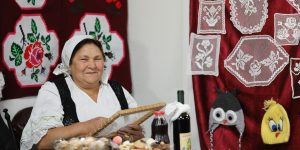“I have been on a train, I loved it today,” says Davud, one of the students of Vladimir Nazor Centre from Sarajevo, who, together with his classmates, travelled to Mostar by Talgo train and had an opportunity to enjoy some of the most beautiful scenery from the train window, on a railway journey that has been declared one of the world’s best railway routes.
A group of students and a teacher from the Vladimir Nazor Centre for children with special needs embarked on a one-day adventure to Mostar. For most of them, it was their first train ride and they could not hide their excitement at being on board the new Talgo train and travelling to Mostar through 90 tunnels on a truly scenic route which been reconstructed with financial support provided by the European Union in order to revitalize railway transportation and promote Bosnia and Herzegovina’s rich natural and cultural heritage. Gianluca Vannini, Acting Head of the Operations Section for Civil Society, Social Development and Cross Border Cooperation of the European Union Delegation to BiH, greeted the students at Sarajevo train station and wished them happy travels. “I am sorry I will not be able to join you today but I am sure you will enjoy your journey and a special day in Mostar with your peers,” said Vannini.
While on-board, the students enjoyed a short, inspiring lecture about trains and life on the rails by Suad Kustura, the Head of Sarajevo Railway Station. “I love the train and I am a true train enthusiast. Since I was a kid I watched my father, a train conductor, put on his red hat and get ready for work. I knew I wanted to be one when I grow up and hope that some of you will be inspired to do something similar”, said Suad to the students, who asked him about railway rules, where the name Talgo originated, and which different trains are operational.
Following the picturesque train ride through Herzegovina, students from the 10th Primary school Petra Bakule from Mostar joined the group and guided us through their home town, to discover Mostar’s rich cultural heritage. As the main guardian of memory and treasurer of the city’s cultural and historical heritage, the Museum of Herzegovina, which was one of the nominees for the European award, EMYA 2016, for most innovative museums, provided the students with an opportunity to experience the natural beauties of Herzegovina and the most significant historical events through contemporary sound, visual and narrative effects. While most of the visitors only walk over the Old Bridge, often unaware of its size and construction, a visit to the Old Bridge Museum enabled the students to explore the labyrinth underground and see the original stones used to build the bridge.
After a guided tour of one of Mostar’s most notable landmarks, the 300-year-old Bišćević house, the students talked about their journey and experiences. In groups, they constructed an imaginary journey through cultural heritage, depicting their ride through Herzegovina, exploration of Mostar’s Old Town, and the museums’ treasures. “Today has been wonderful for both the students and parents, they don’t have many opportunities like these and I am very happy they had a chance to spend time with their peers from Mostar. Any opportunity for them to learn something in an environment which is new, and through carefully planned activities which suit their abilities, is invaluable” noted Belma Hadžihasanović, a teacher from the Centre.
Protection and promotion of children with disabilities is one of the objective of the European Union and through continued assistance to Bosnia and Herzegovina, the EU aims to ensure equal access to rights for all citizens. Increasing awareness, engagement and resourcefulness of communities and inclusion of children are necessary in order to enable positive social change.

